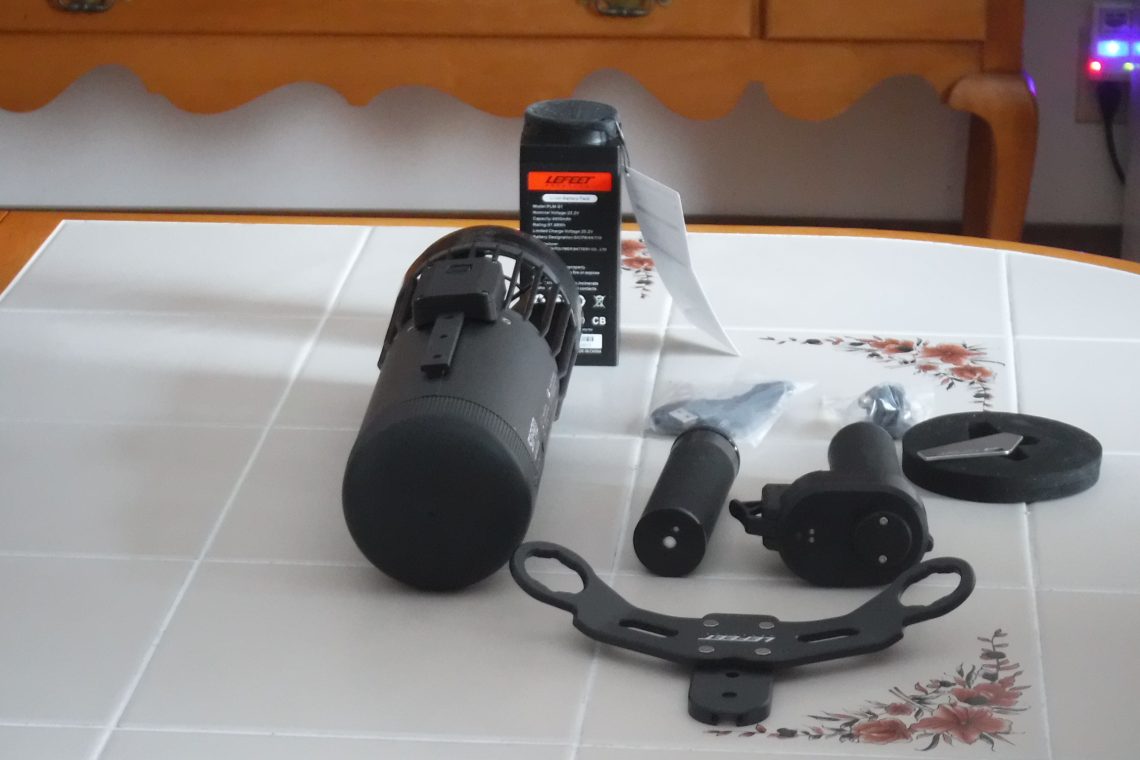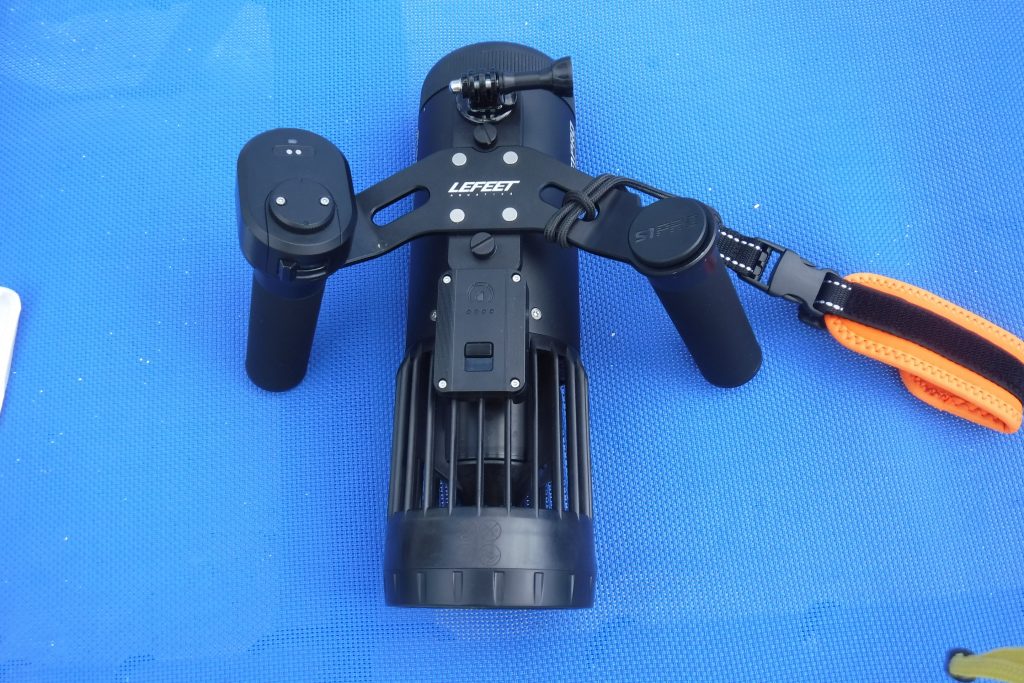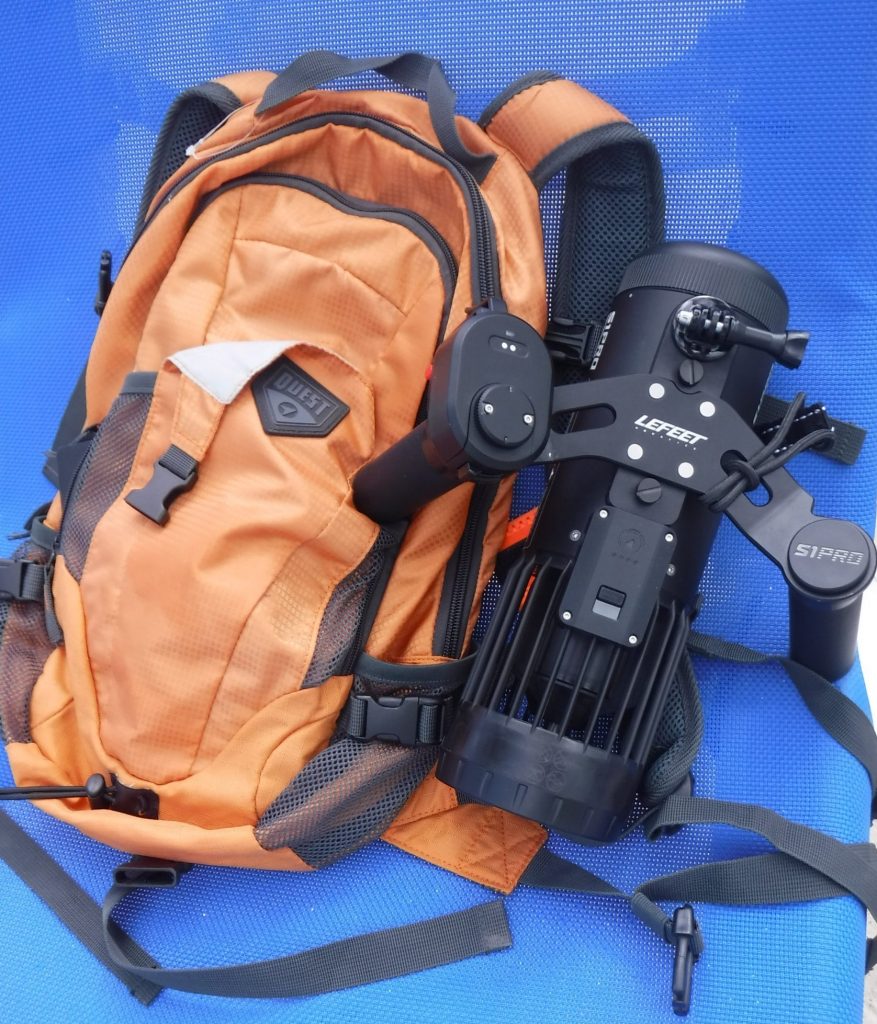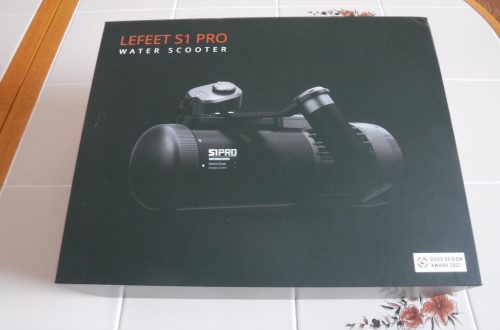
Test Diving the LEFEET S1 Pro DPV
A few years ago, I did a beta test and then a review for the LEFEET S1. Earlier this year, the company asked if I was interested in reviewing their updated model the LEFEET S1 Pro underwater scooter. They shipped me one of the first production models, with the understanding that I would produce an honest review. They expected that, as my original review did have some negative comments.
Test Diving/Driving Conditions
I had originally planned on taking a dive vacation in late March, however, the current travel conditions pushed that back. My new plan became a 2-week cruise with some planned scuba diving and snorkeling days. These are the times that I used the DPV and based this review on:
- Shortly after I received my LEFEET S1 Pro I did an unboxing article. You can read that article and see the unboxing video here.
- Prior to my vacation, I went to a local dive center and used their indoor training pool to check all of my diving equipment. I also checked out the scooter. The pool ranged from 4 feet (1.22 meters) to 14 feet (4.27 meters) deep. Of the hour I spent in the water, 20 minutes of it was using the scooter.
- I did two dives in Aruba, The first was to 60 feet (ca. 18 m) and the second was to 40 feet (ca. 12 m). Unfortunately, visibility was poor, and I was not able to obtain any video. Also, it was a follow-the-leader style dive, so my use of the S1 Pro was limited. (one day of diving sadly had to be canceled)
- Snorkeling In Grand Turk. I enjoyed a beach day with trips into the water for some snorkeling. I used fins, mask and snorkel spending about 2 hours in the water using the scooter. The water was shallow averaging between 4 feet (1.22 m) and 6 feet (1.83 m) deep.
- Snorkeling at Half Moon Cay. This private island of Carnival Cruise Line has a very large beach area. The water was clear and slightly deeper. More importantly, there were fewer people than in Grand Turk. I spent a continuous hour in the water using the scooter at different speeds followed by a few shorter sessions. I used a mask and snorkel without any fins.
- A Second trip to Snorkel at Grand Turk. This time I just used the mask and snorkel while using the DPV. I did two continuous snorkeling sessions of 30 minutes each.
General Summary
Over the years I have used a number of different brands of DPV. I had used the LEFEET S1 for a number of years and like it very much. The LEFEET S1 Pro has many of the same features that the S1 had that set it above most other scooters. I also found the S1 Pro to have slightly better performance and improved a few things I found lacking in the S1.
The LEFEET S1 Pro is a very lightweight DPV, however, it performs as well as heavier more expensive recreational scooters. Traveling with the scooter was easy and the weight did not cause me any concerns while traveling by air. You just have to remember to carry the battery with you on the plane.
The light weight and small size make this device more versatile than most underwater scooters. When I used it for snorkeling, I carried my fins and had the DPV with the rest of my gear in a small backpack. It is not uncommon for a DPV to weigh anywhere from 14 pounds (6.35 kg) to 20 pounds (ca. 9 kg). At just 5.5 pounds (2.49 kg), the LEFEET S1 Pro was hardly noticeable.
I found the smaller size beneficial while I scuba-dived as well. After a little trial and error, I came up with a solution to clip it to my BCD when I was not actively using it that did not impact my trim. This allows my hands to be free. I was never able to do that with other DPVs.
The three speeds that the S1 Pro has provided a comfortable ride. I found myself using the middle speed the most. While scuba diving, I easily zipped past the other divers without a scooter on the middle speed. The high speed gave the same thrill as a fast drift dive.
One of my snorkeling trips had a very rocky entry that was very difficult with fins. I overcame that problem by snorkeling without fins and allowing the scooter to assist with the propulsion. The low-speed setting moved me along at a very comfortable pace, better than if I was using fins. The medium speed allowed me to cover a good distance in a short period of time.
I was not disappointed with the battery life either. The rating says it will last between 45-70 minutes and start to slow when the battery is near empty. I did not have that happen in the 5 days of scuba diving and snorkeling that I did. I just recharged the unit at the end of each day.
Detailed Evaluation
One of the interesting features that make this such an easy device to transport is that the handle is easy to attach and remove. The handle slides onto a rail and is attached with two screws. The screws are quickly tightened with a small flat screwdriver. This may sound petty, but I appreciate that the blade comes on a foam holder. It makes it easier to find when I need to use it.
There are two grips that attach to the handle and one of them is the remote control for the unit. Both the older model and this one has three operating speeds. On the older model, you needed to press a button on the control unit located on the body to change speeds. The new model has a thumb operated switch on the remote control grip. A quick motion of the thumb and you will change speeds. You still can change the speed on the main unit if you wish. The remote has a trigger you press and hold to engage the motor. You can position the remote grip on either side of the bracket.
When you use the LEFEET S1 Pro the first time, you have to pair the remote control and the main unit. It is a simple process and the instructions are clear. This pairing feature allows you to control the unit from the remote. While I have not tested the dual setup, the remote can control two units.
The first thing I noticed as I used it in the pool was how quick it was. I could make very sharp turns and needed to watch how fast I was surfacing. The unit is very responsive changing speeds quickly and stopping just as quickly as I released the trigger.
I was not able to give the DPV as extensive of a workout as I had planned while scuba diving due to restrictions of the dive operator and dive site. What I was able to do, showed me this is an outstanding scooter. Basically, what I did was lap the group. I positioned myself slightly above and to the left of the group in the rear. Then I would pass everyone using the medium or high speed until I reached the front, looped around, and used the slow speed to return to the back. The 18 divers in the group gave me some distance to play with. I also did what a military pilot would call nap of the earth flying. I positioned myself about 5 feet (1.52 m) from the bottom and raced forward maintaining that distance while the contour of the floor changed. It was a nice test of the scooter and my reaction times.
At the end of one dive, there was a mild surface current that required the divers to hold on to a trailing line while waiting their turn to board the dive boat. Not Me, I circled the boat until it was my turn.
Many divers who shore dive will use a DPV to get out to the dive site and back without tiring themselves. Using my snorkeling gear and the underwater scooter I did something similar. I saw a buoy about 200 yards (ca. 183 m) offshore, set that as my target, and used the DPV to get me out there in a few minutes.
The LEFEET S1 Pro And Snorkeling
My preferred vacations are warm water destinations, Both beach resorts, and cruises. Before I became a certified scuba diver, most of my in-water time was snorkeling. While I spend most of my in-water time scuba diving now, there are locations where snorkeling is best. This cruise had some port calls that did not give me an opportunity to scuba dive but did allow for some snorkeling. I definitely took advantage of that.
In the past, using a DPV while snorkeling did not have much appeal to me. Mostly because the size and weight made them awkward to get to the water, and they were difficult to handle when not under power. That is not the situation I found while using the LEFEET S1 and now the S1 Pro.
The small size and light weight did not cause any concerns getting in and out of the water. Once in the water, I generally alternated using snorkeling under my power with periods of using the LEFEET. Snorkeling is a great pastime, but it is also a great exercise, so I did not want the DPV to do all the work. I did set aside a couple of snorkeling sessions using just the scooter to get a feel for its endurance, which I was very satisfied with.
My future snorkeling trip will include this scooter, especially for locations that are a distance from shore to the best spots. In locations close to shore in shallow waters or with uneven entries, I might snorkel without the fins.
A personal view, children love the water, and snorkeling is a great activity for many. However, things like tube rides with the speed are more likely to get their attention. I see snorkeling with a scooter as a more exciting option as well as safer and more educational. Watching a school of fish has a more lasting impact than falling off a tube ride.
Product Specifications
These specifications are copied from the company’s website.
- Weight: 5.51lbs / 2.5kg (including battery)
- Size: 11.8” x 11.8” x 6.3” (Including Handle Bracket)
- Working temperature: 0°C ~ 40°C
- Waterproof depth: 40m
- Adjustable Speed: Three Speeds: low/med/high
- Endurance time: 45-70 minutes for the main unit / 2.5 hours for the remote control (normal use)
- 8kg/18 lbs of thrust
- Support for mounting sports cameras
Battery
- Charging Voltage: 25.2 V
- Charging Current: 3 A
- Rated Capacity: 4400 mAh
- Rated Energy: 97.68 Wh
- Charging Temperature: 50°F~ 113°F
- Charging Time: 2.5h
- Net Weight: 1.68 ± 0.044 lb
Battery Charger
- Input Voltage: 100 ~ 240V
- Output Voltage: 25.2 V
- Output Current: 3 A
Getting Around
I want to make some comments on transporting the LEFEET S1 Pro. While LEFEET does have a backpack designed for the unit, I used something else. I have a old 12 liter backpack, that had a water bladder. The drinking tube for the bladder became damaged and it was better for me to get a new backpack instead of replacing the bladder. This old unit became my carrying case for the DPV.
The main portion of the pack that would have held the bladder was the perfect size for the scooter body and the unattached handle assembly. The separate pocket became the home of the chargers, manual, and screwdriver. While traveling, I packed this with my dive gear and took the battery in my hand-carry luggage. The battery is a little unusual, and airport security did want to examine it. However, it was only a brief delay.
When headed to the beach to go snorkeling, this setup was large enough to include my mask and snorkel and to attach a beach towel too.
Extra Items?
The LEFEET S1 Pro is negatively buoyant. Meaning if you let go of it, it will sink. So you do need to use the restraining strap. While scuba diving, you can use your BCD to add any extra lift that you may need. While snorkeling, even with the negative buoyant S1 Pro, I was able to maintain a slightly positive buoyancy. I do, however, think that getting the dive fin that LEFEET has might be helpful if you are planning on longer snorkeling excursions or for people with a little less positive buoyancy. I would definitely recommend one for children and younger teens. The dive fin provides flotation for the scooter.
Getting a second battery would depend on who was using it and how. If it was being shared between a few children or continuous use on a dive, then a second battery may be useful. However, for my snorkeling use, I ran out of energy before the battery. A single charge was more than enough for my two dives. Recharging the battery was convenient.
I did not test the single grip rail kit. I do see where some people might prefer that setup. It will allow you to free up a hand for other things. I found I would veer off course trying to use one hand on the normal two grip rail. Basically, I just stopped the scooter when I wanted to check my gauges, turn my video camera on or off, or to take a still photo.
Closing comments on the LEFEET S1 Pro.
This is a device that I sense I will be using often. It will allow me to simulate a drift dive when conditions are not strong enough for that. I also know a few shore dives where I will use this to get out to the dive site. I plan on clipping it my surface marker when I reach the site and using it on the return to shore as well.
It will also liven up a few snorkeling trips. There have been many times when it was good to get out snorkeling but ended up boring trips. This will certainly remove the boredom.
LEFEET has some current specials with their summer sale






